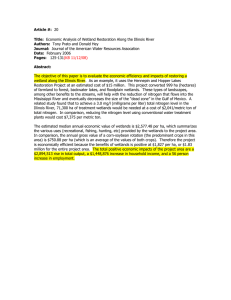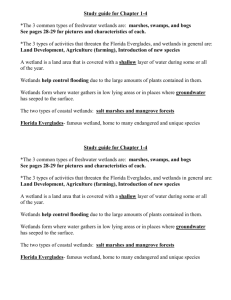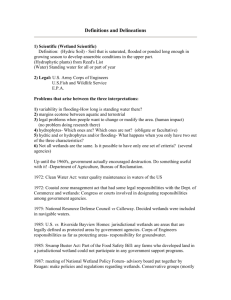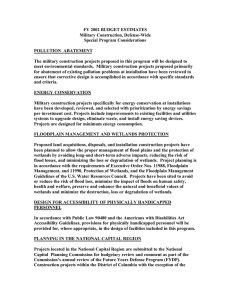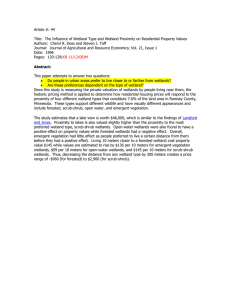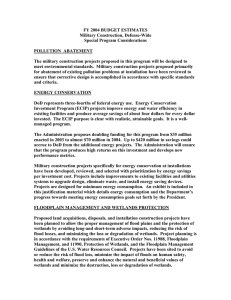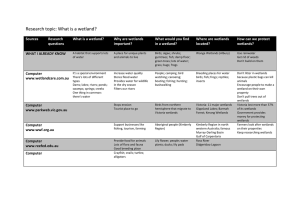Study of Wetland Flow Dynamics Using Satellite Altimetry
advertisement
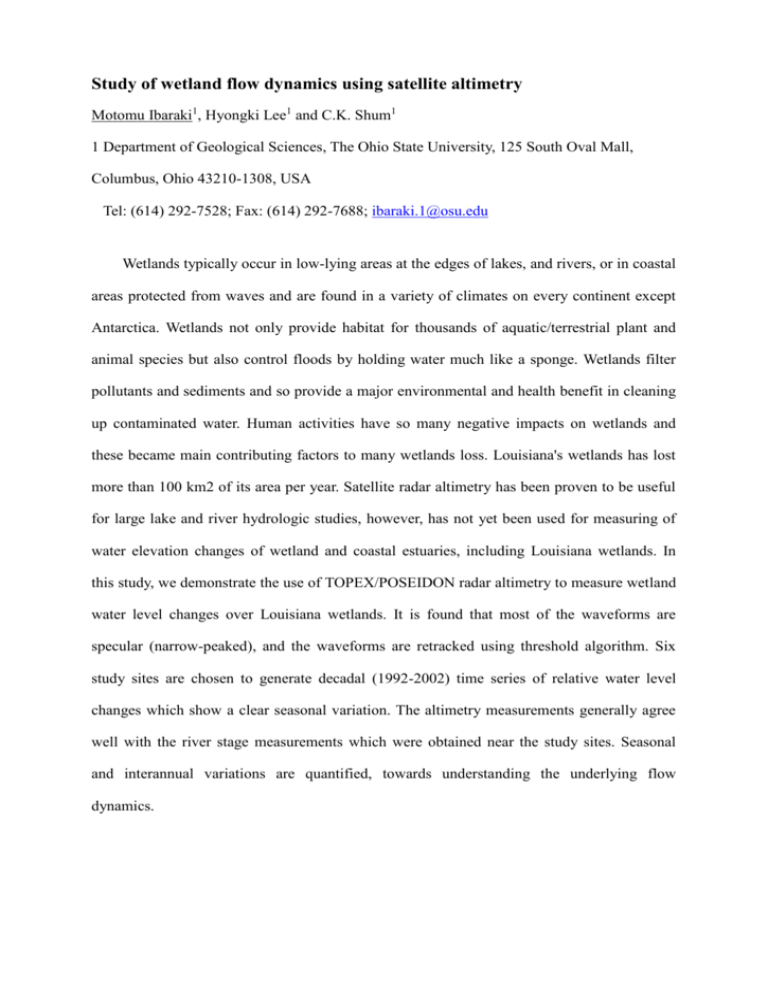
Study of wetland flow dynamics using satellite altimetry Motomu Ibaraki1, Hyongki Lee1 and C.K. Shum1 1 Department of Geological Sciences, The Ohio State University, 125 South Oval Mall, Columbus, Ohio 43210-1308, USA Tel: (614) 292-7528; Fax: (614) 292-7688; ibaraki.1@osu.edu Wetlands typically occur in low-lying areas at the edges of lakes, and rivers, or in coastal areas protected from waves and are found in a variety of climates on every continent except Antarctica. Wetlands not only provide habitat for thousands of aquatic/terrestrial plant and animal species but also control floods by holding water much like a sponge. Wetlands filter pollutants and sediments and so provide a major environmental and health benefit in cleaning up contaminated water. Human activities have so many negative impacts on wetlands and these became main contributing factors to many wetlands loss. Louisiana's wetlands has lost more than 100 km2 of its area per year. Satellite radar altimetry has been proven to be useful for large lake and river hydrologic studies, however, has not yet been used for measuring of water elevation changes of wetland and coastal estuaries, including Louisiana wetlands. In this study, we demonstrate the use of TOPEX/POSEIDON radar altimetry to measure wetland water level changes over Louisiana wetlands. It is found that most of the waveforms are specular (narrow-peaked), and the waveforms are retracked using threshold algorithm. Six study sites are chosen to generate decadal (1992-2002) time series of relative water level changes which show a clear seasonal variation. The altimetry measurements generally agree well with the river stage measurements which were obtained near the study sites. Seasonal and interannual variations are quantified, towards understanding the underlying flow dynamics.

